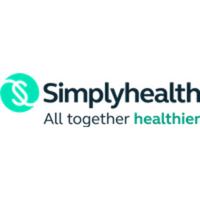Three ways to use technology to communicate reward and benefits to an international workforce

When reward and benefits are such a significant investment for many businesses, it’s a wonder more aren’t recognising the value of good and consistent reward communication.
Communicating with an international, remote workforce adds another layer of complexity. When your workforce is spread across countries, continents, or the globe, it can be a real challenge to reach and engage everyone with your message.
International employers can look to take advantage of advances in technology that make connectivity easier than ever. Here are three ideas of how you can use technology to communicate more effectively with your international workforce about reward and benefits.
1. Workplace collaboration tools
For international businesses, workplace collaboration tools such as Yammer or Workplace are an important means of communication to keep teams connected. But they can also be used to promote your reward and benefits offering.
Whether you’re introducing a new benefit to your workforce, or keeping them informed of important changes, social tools can really help spread your message far and wide. You could consider hosting webinars about reward that can be recorded, helping to overcome time differences. Or perhaps run a captivating visual campaign to launch new benefits, creating buzz and excitement across all locations.
2. Digital health solutions
There’s been significant growth in the use of digital solutions like virtual GP services and health apps. Technology like this makes access to health advice and support even easier – especially for workers who might have to travel. For these employees, accessing a traditional GP could be difficult, so an online service to tap into if they have a health concern can be really beneficial.
Health promotion often forms a part of these digital services too, helping communicate messages about the importance of staying well to users, wherever they are. And because they are online, it’s easy to link these services back to other health and wellbeing benefits you might offer; things like an employee assistance programme or health plan.
3. Benefits platforms
Employee benefits platforms are another helpful channel for your communication efforts. Bringing together all aspects of your reward and benefits offering into a one-stop shop, online platforms can be a powerful tool to drive take-up of, or engagement with, benefits. It doesn’t matter where in the world an employee might be, they’ll be able to see what’s on offer to them anytime, anywhere.
You can also gain valuable insights from these platforms into how benefits are being used. This helps to further inform your communications strategy. For example, if you can see that a certain benefit doesn’t have much usage in a particular location, you might consider adjusting your messages or communication channels to better connect with that audience.
Technology provides many opportunities for better reward and benefits communication. But you need a solid strategy behind that. We’ve created a handy guide on benefits communication, which will help you design a winning strategy for communicating with your whole workforce; local or global.
This article is provided by Simplyhealth.
In partnership with Simplyhealth
Our health plans make it easy for people to maintain their health&wellbeing.







